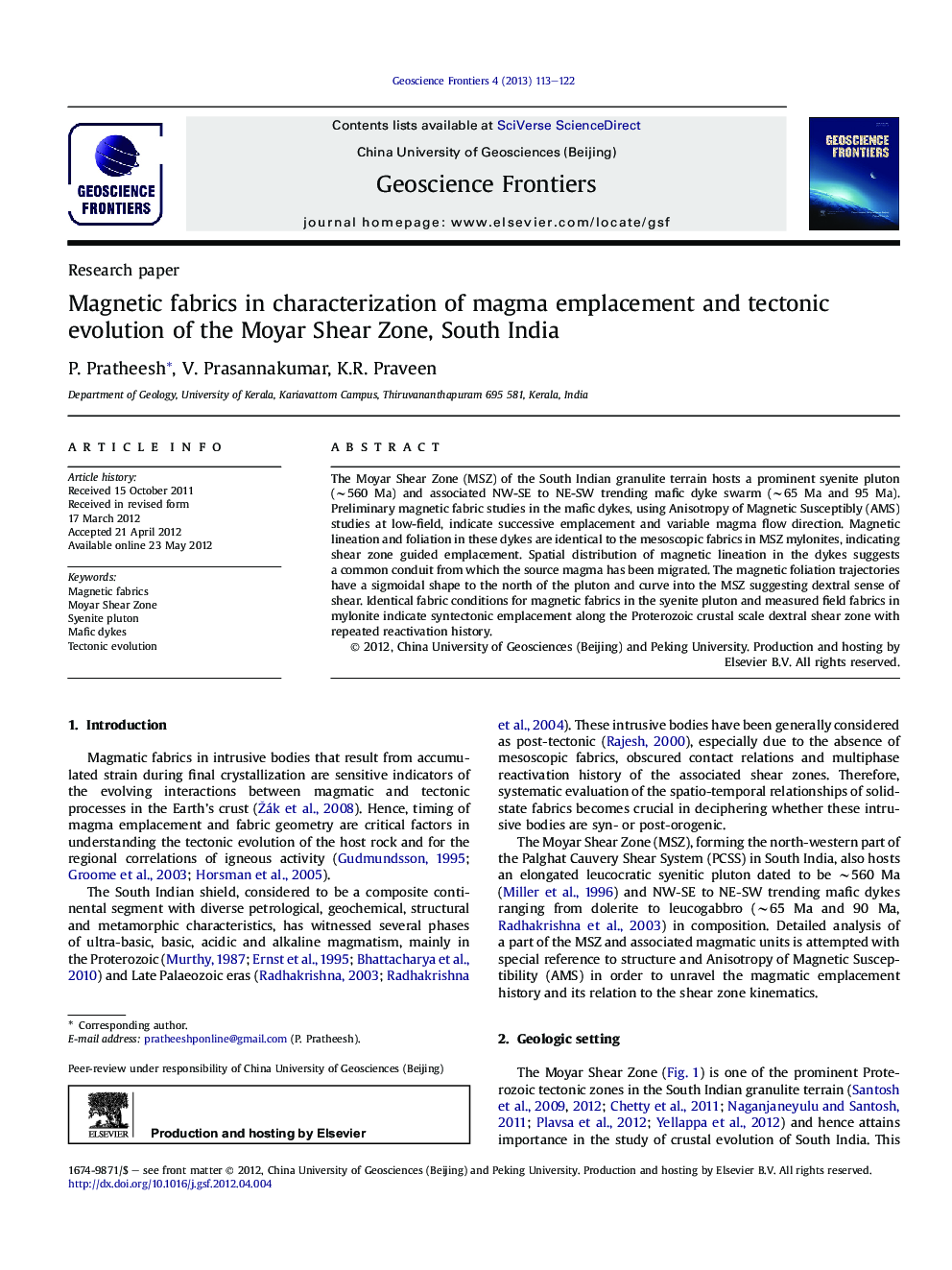| Article ID | Journal | Published Year | Pages | File Type |
|---|---|---|---|---|
| 4681869 | Geoscience Frontiers | 2013 | 10 Pages |
The Moyar Shear Zone (MSZ) of the South Indian granulite terrain hosts a prominent syenite pluton (∼560 Ma) and associated NW-SE to NE-SW trending mafic dyke swarm (∼65 Ma and 95 Ma). Preliminary magnetic fabric studies in the mafic dykes, using Anisotropy of Magnetic Susceptibly (AMS) studies at low-field, indicate successive emplacement and variable magma flow direction. Magnetic lineation and foliation in these dykes are identical to the mesoscopic fabrics in MSZ mylonites, indicating shear zone guided emplacement. Spatial distribution of magnetic lineation in the dykes suggests a common conduit from which the source magma has been migrated. The magnetic foliation trajectories have a sigmoidal shape to the north of the pluton and curve into the MSZ suggesting dextral sense of shear. Identical fabric conditions for magnetic fabrics in the syenite pluton and measured field fabrics in mylonite indicate syntectonic emplacement along the Proterozoic crustal scale dextral shear zone with repeated reactivation history.
Graphical abstractFigure optionsDownload full-size imageDownload as PowerPoint slideHighlights► Variable magma flow direction of the mafic dykes in the Moyar Shear Zone is brought out from the analysis of magnetic fabrics. ► The dyke swarms show shear zone guided emplacement. ► Spatial distribution of magnetic lineation in the dykes suggests a common conduit from which the source magma has been migrated. ► Magnetic foliation trajectories in syenite pluton indicate dextral shear sense. ► Magnetic fabrics are effectively used to establish the temporal relation between magmatism and shearing.
